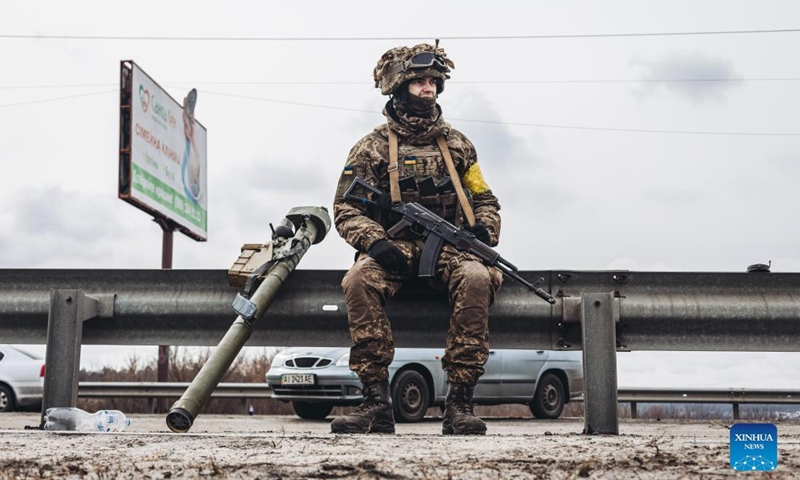
A Ukrainian soldier sits by the road in Irpin, Ukraine, on March 4, 2022. Photo:Xinhua
Europe saw the world's biggest rise in arms imports in the past five years, a trend set to accelerate following recent rearmament commitments, researchers said Monday.
While arms exports declined globally by 4.6 percent in 2017-2021 compared to the preceding five years, Europe posted a 19-percent increase, according to a study published by the Stockholm International Peace Research Institute (SIPRI).
"Europe is the new hot spot," Siemon Wezeman, co-author of the annual report for over three decades, told AFP.
"We are going to increase our military spending not just by a little bit but by a lot. We need new weapons and a lot of that will come from imports," the senior researcher said, adding that the majority was likely to come from other European countries and the US.
Germany in particular has already announced plans to up its military spending, as have Denmark and Sweden.
European countries spooked by the Russia-Ukraine crisis are expected to beef up their militaries with fighter jets, such as the American F-35, missiles, and artillery.
"Most of these things take a bit of time. You have to go through the process, you have to decide, you have to order, you have to produce. This generally takes a couple of years at least," Wezeman said.
Europe's share of the global arms trade has already risen from 10 to 13 percent in the past five years, and this share will increase "substantially," according to Wezeman.
The opaque nature of many contracts and donations of weapons without payment make it difficult to provide an exact figure for the world arms trade but experts estimate turnover at close to $100 billion annually.
According to SIPRI, Asia and Oceania remained the main importing region over the last five years, home to 43 percent of arms transfers and six of the world's largest importers, including India, Australia, and Japan.
While arms imports to the world's most populous region declined by around 5 percent over the past five years, East Asia and Oceania specifically saw strong growth, with 20 and 59 percent respectively.
In the Middle East, the second-largest market, accounting for 32 percent of global arms imports, the increase was three percent, driven mainly by investments in Qatar amid tensions with its Gulf neighbors.
"The current oil prices mean they're going to have a lot of income and that usually translates into large orders for arms," Wezeman noted.
When it comes to exporting countries, the US leads the pack with 39 percent.
AFP




